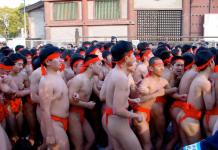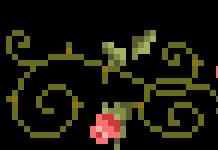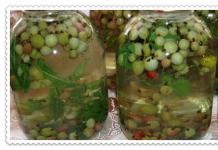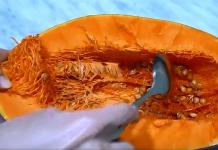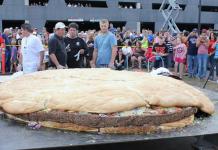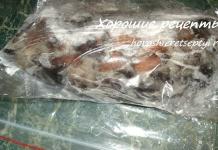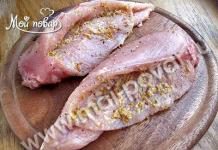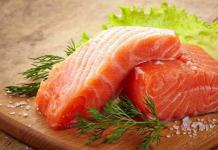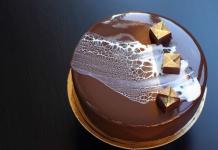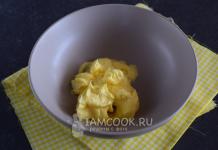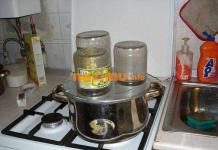Raspberries are a very useful plant that can be seen in almost every garden area. This is one of the most delicious berries in our gardens. But who of us has not noticed on the bushes, either worms, or some kind of gnarled, hardened berries? Gardeners always have a lot of questions about how to grow delicious, sweet raspberries. We have selected the most frequently asked questions and tried to answer briefly.
How to choose the best place to plant raspberries?
The right thing is done by those gardeners who set aside a corner of the garden for her on their site or plant her along the hedge. So it is more convenient to look after her. But still, the corner of the garden is preferable, since it is there that a large amount of snow accumulates during the winter.
What is the best soil for raspberries?
Fertile, moist soils are best for growing. The best ones for her are sandy-clayey, alluvinal-meadow, which are more saturated with nutrients than others. Heavy clay soils and soils oversaturated with limestone are unacceptable for it.
How to prepare the soil for planting raspberries?
On the site intended for planting, 5-8 kg of manure, 70-80 g of superphosphate, 20-25 g of potassium sulfate are applied - this is per 1 sq. m. Scatter fertilizers evenly over the entire area of the site, dig it deeply.
Do I need to plant several varieties of raspberries side by side for better pollination?
Most raspberry varieties are self-fertile, so there is little need to plant pollinators nearby. Of course, you can plant several varieties side by side, but this does not affect pollination.
When to plant raspberries?
The best time of the year for planting or transplanting seedlings is autumn - late August - September. In the spring, you can plant only as an exception.
How to plant raspberry seedlings correctly?
Pits for planting raspberries are usually 30x30x30 cm in size. The seedlings are positioned so that after filling with soil they are 6-7 cm below the surface of the earth. The roots must be carefully spread out and covered. The soil around the seedling is compacted. For better conditions, when watering, the soil is raked away from the trunk - a small depression is made so that the water does not spread. After watering, the soil around the seedlings is mulched with peat, hay, straw, fallen leaves, and other mulch.
Do raspberries need to be trimmed after planting?
Necessary. If you do not cut it, then, firstly, it will give a small harvest, and secondly, new young shoots will not form, which will yield next year, and thirdly, cut plants take root better. Therefore, immediately after planting, the stems are cut with shears, leaving stumps no more than 20-25 cm in height.
How far apart should raspberry seedlings be planted?
A distance of 1-1.2 m should be left between the rows, and 50-60 cm between seedlings in a row.
How to propagate raspberries?
The main methods of reproduction are seeds, vegetative reproduction. Seed propagation in amateur gardening is practically not used. Plants usually grown in this way rarely take on the valuable qualities of the original parent varieties. The vegetative method involves using young shoots from the roots (root suckers) or dividing the bush for reproduction. This is the cheapest, fastest way.
How, when and why to care for raspberry plantings?
If you do not take care of the plantings of raspberries, then it will overgrow with weeds, which greatly deplete the bushes. Few young shoots are formed, they are weak. The berries become small, their taste deteriorates, and the yield decreases.
Autumn digging of row spacings is required. First, remove the extra young shoots, and then dig up the soil between the rows.
In the spring, before bud break (late March-April), they must loosen the soil in the raspberry tree. In the center, between the rows, it is deeper - 10-15 cm, and next to the plants - shallowly - 5-7 cm, so as not to damage the root system.
From the beginning of the appearance of the leaves and before picking the berries, they loosen two more times.
After harvesting, they loosen again, and then do not touch the aisles until autumn - annual shoots should ripen well.
How, when to water and how much water do raspberries need when watering?
Raspberries love watering. Most of all moisture is required when it blooms, when tied, berries ripen - from May to August. The first time (of course, if there is no rain) is watered before flowering (end of April), the second time - at the end of May. Be sure to water it 1-2 times when the berries are poured. Watered for the last time after harvest.
Watering rate - 1-2 buckets of water for one plant. It is most convenient to water through the furrows, which are made on both sides of the row at a distance of 20-25 cm from the bushes.
How to trim raspberries?
Immediately after planting, the raspberry stalks are cut off, leaving hemp 20-25 cm high. In the second year, 2-3 young shoots are left - the rest are cut with pruning shears to the ground, leaving no stumps.
As soon as the entire crop is harvested, all two-year-old shoots on which there were berries are cut out.
In the spring, pruning is also recommended, since after winter it is usually visible which shoots are weak, which ones were sick. Young shoots are cut out if there are a lot of them or they grow too often. No more than 10-12 young shoots are left per bush.
How to rejuvenate raspberry bushes?
Older bushes usually have less young shoots. Sooner or later, the yield of such bushes decreases. Experienced gardeners know that yields can be restored by removing the old rhizome. In this case, there is an increase in the growth of young shoots. In parallel with the removal of the old rhizome under raspberries, increased doses of organic and mineral fertilizers are applied. Such rejuvenation should be carried out every 5-6 years.
How and what is raspberry fertilized with?
It is best to alternate the application of organic and mineral fertilizers for raspberries. The dosage is as follows - 1.5-3 kg of manure + 1 tablespoon (30 g) of superphosphate + 1 tbsp. a spoonful of potassium sulfate (30 g) per 1 sq. m. Organic matter (manure) is introduced in the fall during deep digging of row spacings. Superphosphate is applied in the spring before bud break during the first loosening. Potassium sulfate - at the end of flowering. Fertilizers are evenly distributed over the surface of the soil, dig in or loosen it.
How long, how many years can raspberries grow in one place?
With good care, it can be grown for 12-15 years without changing the planting site.
What are the fungal diseases of raspberry, how to deal with them?
Blue-violet spotting (didimela)
Signs: blue-violet spots appear on the stems at the point of attachment to the cuttings - the leaves fall off, but the cuttings remain and droop. The culprit of the disease is the spores of the fungus overwinter on young shoots of raspberries.
Control measures: remove, burn diseased shoots; spray with copper-containing preparations (chorus, Bordeaux liquid, HOM, others).
Drying of shoots (coniotirium)
This fungal disease manifests itself in the drying of the shoots, sometimes together with the berries.
Control measures: cut, burn the affected shoots; spraying with copper-containing preparations.
Anthracnose
Spores of the fungus infect shoots, berries, leaves, spots with a purple border appear on them.
Control measures: removal, burning of affected shoots together with leaves, berries; Spraying in late autumn, summer (2-3 times after 2 weeks) with copper-containing preparations that prevent the reproduction and development of the fungus.
Raspberry leaf rust
With this disease, light yellow spots appear on the upper part of the leaves, a little later in the same places, but orange-yellow pimples are visible from the bottom of the leaf, which eventually acquire a dark rusty color - these are fungal spores. The fungus that causes the disease hibernates on fallen leaves.
Control measures: spraying fallen leaves with copper-containing preparations. In the spring, the obligatory first spraying after the leaves blooming, repeated after two weeks.
Raspberry leaf spot
Signs of the disease: white-dirty spots appear on the leaves. Spores of the fungus overwinter on fallen leaves.
Control measures: as soon as the first manifestations of the disease are noticed, spray with copper-containing preparations; fallen leaves are recommended to be burned.
What are the viral diseases of raspberries, how to deal with them?
Of the viral diseases, the most famous are: yellow mosaic, witch's broom, yellow leaf venation, viral (infectious) chlorosis.
Witch's broom (overgrowth, bushiness)
When sick with a witch's broom, numerous thin, shortened shoots are formed on raspberry shoots - they become like a broom. Much less berries are tied.
Yellow mosaic
In case of a yellow mosaic disease, pale green spots appear on the leaves of raspberries, which then turn yellow.
Yellow venation of leaves
With yellow venation of leaves, yellow stripes appear along the veins.
Infectious (viral chlorosis)
With infectious (viral) chlorosis, by the middle of summer, the leaves turn yellow, first along the veins, and then the entire leaf turns yellow, like in autumn.
All these diseases are viral in nature.
Control measures: removal of diseased bushes from the root; treatment with drugs that destroy pests - aphids, leafhoppers, others that are carriers of pathogenic viruses, for example, Aktellik, Iskra, Karbofos, Kemifos, and others.
How to prevent the appearance of worms in raspberries?
The culprit for the appearance of the worminess of the berries is the raspberry beetle. It hibernates in adulthood in the ground, appears in the spring, eats buds and flowers. Raspberry beetle females lay eggs in buds, flower buds, green raspberries. Beetle larvae (worms) live in berries, feed on them, and pupate into the soil. This cycle repeats once a year.
Control measures: in the fall, dig up the soil, that is, disrupt the wintering place of the raspberry beetle. And in the spring, spray the bushes until the leaves appear with one of the following drugs: Fufanon, Kemifos, Karbofos.
How to deal with raspberry agrilus?
Raspberry agrilus is a light gray-greenish beetle. The female beetle lays its eggs in raspberry stalks under the skin. The emerging larvae make spiral passages in the stems - the shoots die off.
Control measures - cutting, destruction (burning) of the affected shoots - this is the only way ..
How to deal with stem raspberry gall midge?
The raspberry stem gall midge is a small mosquito that usually appears in May-June. Female mosquitoes lay eggs under the skin of raspberry stalks. The larvae (worms) live in the stem, feed on its pulp. At the site of the introduction of the larvae, cones appear on the stem, growths, in which there is usually one larva, rarely 2-3. The stem breaks easily at the place where the growth appears. Sooner or later, food stops flowing to the top of the stem, the leaves wither, the shoots die off prematurely, the crop dies.
Control measures: cutting off affected branches, burning them; treatment of raspberries with mosquito repelling agents - infusions of tobacco, mullein, walnut leaves, bird cherry, nettle, wormwood, etc. Spray in the evening, since mosquitoes begin their action at nightfall, all night.
How to deal with raspberry kidney moth?
The butterfly of the raspberry bud moth begins its vigorous activity during the flowering of raspberries - it lays eggs in a flower. The caterpillar feeds on the juices of the flower, and then hides in the bark of the stem for the winter. In the spring, caterpillars take root in the kidneys, eat out everything inside, and pupate there.
Control measures: spray during the swelling of the kidneys with a 30% solution of karbofos.
How to deal with leaf rollers, aphids and mites - raspberry pests?
Leaf rollers
There are many varieties of leaf rollers. A common behavior for them is great mobility, when they are found, they begin to wriggle strongly and try to "escape", descending on cobwebs. Caterpillars of leaf rollers feed on leaves and buds. At the same time, the leaves are wrapped along the length or width of the leaf, which is why they are called leaf rollers.
Control measures: effective late-autumn and summer spraying with actellik. In early spring, before bud break or in late autumn, spraying with preparation No. 30 is effective.
Aphid
Aphids suck juices from raspberry leaves, from shoots, berries. In this case, the affected leaves curl, the shoots stop growing. Aphids are dangerous because they are a carrier of viral diseases.
Control measures. The drug Bi-58 is effective against aphids.
Mites
Various mites do great harm to raspberries - the leaves turn pale, fall off, the berries remain small and tasteless. In late autumn, early spring, before the leaves bloom, I advise you to treat the bushes with preparation No. 30, before the fruits appear - Bi-58.
How to Fight Raspberry Bacterial Cancer?
It should be noted that almost all types of raspberries are not resistant to bacterial cancer. Diseased plants cannot be saved; they must be destroyed. Preventive measures for seedlings before planting are relatively effective. Carefully select seedlings before buying, examining the roots - there should be no growths, no thickenings. There are no drugs against bacterial raspberry cancer yet. Do not plant it in the place of plants removed due to disease for 2-3 years. The soil can be improved by planting legumes in this area for several years.
http://ogorod23.ru/kak-vyirashhivat-malinu/
Raspberry care: pinching or pinching shoots
Very often on gardening sites you can find the following statement: “A very important point in caring for raspberries is pinching or pinching shoots. Pinch a young raspberry shoot - this will increase the yield several times. " At the same time, neither the variety nor its features are indicated. But the pinching method cannot be applied to all varieties of raspberries. Pinching (translated from German) - removing the top of a young shoot by pinching it with special tweezers, scissors, or just fingers.
Pinching is one of the methods of agrotechnical measures for caring for bushes, their formation, and increasing the yield of raspberries. It is used to stop the growth of the main shoot upward, to form a crown, to enhance the growth of the left branches. This method is used to "wake up" part of the buds on a young shoot, thus forming several lateral branches (laterals).
The first time I first learned about such a method of increasing the yield of raspberries was from the fifteen-year-old magazine “Family. Earth. Harvest". I tried it. It didn't work out right away. But I can already draw some conclusions. Now I successfully use the pinching of young shoots in my area. Caring for this berry crop consists in timely pruning, watering or fertilization. And pinching young shoots perfectly complements them. However, this method cannot be used on all raspberry varieties.
First pinch done in the second year after planting, when the bush has at least two young replacement shoots (Fig. 1.2). If you pinch one (Fig. 1a) and leave the other untouched, then 3 laterals will grow on the pinched shoot (Fig. 1b). There are 2 and 4. The second shoot (not plucked) does not give laterals. If you pinch both (Fig. 2a), then two or three laterals will grow on both (Fig. 2b). Rarely, but there are 6, mostly 3-4. It all depends on the variety of raspberries, cultivation techniques.

Second pinch done in the third year after planting. Figure 3a shows 2 fruiting stems and 3 replacement shoots. The pinching is done on the middle, two lateral ones are left without pinching - they will not give lateral branches. On the middle shoot, 3 laterals are shown (Fig. 3b). Maybe two to five.
Rice. 4a shows the same number of fruiting replacement shoots, but all three were pinched. The number of laterals on the middle is 3, on the right - 2, on the left - no. Or maybe all of them have 2 or more. 
In subsequent years, the number of pinching options may vary. Everything will depend on the number of fruiting stems, replacement shoots, years of bush life. As soon as the replacement shoots began to grow less compared to last year, it means that the life of the bush ends, the pinching stops.
Before starting this operation, you need to know the variety of raspberries, their reaction to pinching.
The pinching begins when the young shoots of replacement reach a growth of more than 1.2 m, that is, they exceed the wire of the trellis so that it can be tied up. This pinching period starts around May 25 and lasts until mid-June. Sometimes the period is extended to a maximum of June 20-25, if the spring is late.
The pinching begins from the second year after planting a standard two-year-old seedling with a good root system, when the bush has at least two strong replacement shoots.
Pinch only tall varieties of raspberries, which do not have the ability to branch - Bryanskaya, Meteor, Solnyshko, Balsam, Combi, Sputnitsa, Brigantine, Latham, Prussen Berlin, others. Pinch up to 10 cm of the top of the young replacement shoot.
All undersized varieties of raspberries do not need pinching. Usually these are those that give many shoots of replacement, or deliberately form a bush, leaving many fruiting stems or branches of replacement, in total up to 20 and more.
In any year, pinching should be carried out on no more than 50% of replacement shoots.
A pinch done later in July, for example, is negative. Lateral literal branches will grow short, do not have time to woody well before the first autumn frosts, that is, the epidermis of the shoots will be frost-resistant, and even if it withstands the first autumn frost, it may freeze out in Christmas or Epiphany frosts, or will not be able to withstand a cold, long winter.
Late pinching on remontant raspberry varieties sharply reduces the first autumn harvest in young replacement shoots. The buds will not all bloom, the inflorescences will not all be tied up, the set fruits will not all ripen, with a cold snap they may hang, not ripen for up to 10-15 days or more, and if ripe, the berries will be small.
After pinching, the period of awakening of the buds, the growth of lateral branches lasts about 10 days. If you do not pinch, then during this time the central shoot would grow up by about one meter or more. That is, by pinching off the top of the central branch, we slow down the development of the plant. This slowdown has a negative effect on the autumn harvest of some remontant varieties. Individual fruits do not have time to ripen before the first autumn frost.
Some summer raspberry varieties tend to branch without pinching. They independently form up to 3-4 lateral branches. Such varieties do not need pinching. These are Scarlet Sail, Cascade Bryansk, Kokinskaya, Modest, Novost Kuzmina, and others.
Of the remontant varieties, for example, I pinch only Indian Summer, since the variety after pinching gives up to 15-17 lateral branching laterals.
The repairing variety Progress does not need to be pinched, since this is a late autumn fruiting variety. A fruit twig, like a bunch of grapes, grows alone on the top of a young replacement shoot, with a total number of buds, inflorescences, fruits up to 300, sometimes up to 400. If you pinch, then there will be no such bunch. 2-3 lateral lateral branches will appear, they will bloom, some of the fruits will be tied, and they will not have time to ripen before the first autumn frosts. As a rule, the bunches together with the branch branches freeze, you have to cut everything off. The remaining young shoots are low, and the summer raspberry harvest decreases the following year.
On the Progress variety, it is recommended to pluck out 50% of the buds, inflorescences, small fruits in the ovary stage. The remaining 50% of the fruits will be large, one hundred percent yield of marketable fruits before the first autumn frosts is ensured, and the yield increases.
In all remontant varieties of non-tree-like raspberries, in which, on young shoots of replacement in autumn, the crop is located at the top in a compact brush (Progress) or the fruit branch has several branches (Tachanka, Lloyd George, Meteor, Zhuravlik, Lesnaya, other varieties), you do not need to pinch ...
Now there are many new wonderful varieties of raspberries. Nothing is allowed about any no practical application say whether or not the yield will increase after pinching young shoots. All that is described above has been tested empirically. Some varieties responded well to pinching with a significant increase in yield, while in others it, on the contrary, decreased.
Planting and transplanting raspberries, caring for seedlings

Most often we grow raspberries with red fruits, but there are varieties with purple, black or yellow berries. Various ripening times allow you to enjoy the harvest from mid-summer to autumn. Raspberries should not grow in one spot for more than four years. But planting or transplanting raspberries to a new place, caring for seedlings is not such an easy process - everything must be done skillfully. Usually, the berries ripen in the middle of summer on shoots that have grown in the past year. But there are raspberry varieties that give two harvests a year.
Berries are rich in fiber, contain vitamin A, folate, antioxidants, and numerous minerals. The juice contains vitamin C, and the tiny seeds contain vitamin E.
Raspberries are very susceptible to viral diseases. For this reason, it is especially important to plant only plants obtained from a completely reliable source on your site.
Raspberries grow better in full sun, but this condition is not always easy to achieve in a small garden and, if necessary, the plant will withstand a little shade. She likes more acidic soil (pH 6.0-6.5). In alkaline soil, it will seriously suffer from excess iron and manganese deficiency. The soil should not be dry during flowering and fruit ripening.
Planting raspberry seedlings too deep is the most common mistake gardeners make. When planting, the roots should be buried no more than 8 cm. If the seedlings have just arrived from the nursery, then you can see the old soil level on the stems - this is like an indicator of the correct planting depth.
The fastest way to plant raspberries is to dig a trench about the width of your shovel. When you place the seedlings in the dug trench, straighten the roots, trim off any damaged parts. Cut off the shoots immediately after planting, they can be no more than 60 cm in height.
So that later you will not be upset because of a lack of harvest, do not grow it in one place for more than four years, and then replant it to a new place. Many gardeners know about this. But most often the size of our garden plots is not so large, so all raspberry bushes are immediately transplanted. And there is usually no harvest the next year. Small, low-cut seedlings with their harvest can please only visiting children. To get a consistently high yield every year, you can use one of the two planting methods below.
Method one. In a new location, it is best to plant raspberries after potatoes, onions or tomatoes. Planting pits are prepared in advance, in fact, a year before planting. At the end of July, it is necessary to dig holes half a meter in depth, width and length. The gap between them should be about the same as their width. Each planting hole should be filled with a bucket of rotted manure, compacted, and covered with earth on top. It is advisable to pre-fertilize the land: 35-40 grams of ammophos, 10 grams of potassium salt or 60-80 grams of wood ash.
The next year, we select replacement shoots from the bushes at the end of July and the first half of August, or transplant well-developed raspberry offspring to prepared places. After planting, the tops of each plant should be trimmed by only 10-15 cm. It is advisable to tie the plants to a peg or trellis. Sprinkle each well with plenty of water (6-8 liters). Two or three days later, it is useful to fertilize raspberry seedlings with strawy rabbit droppings or any other organic fertilizer.
If you do everything in this way, then raspberries will take root well before frost. In the first year after planting, it will give a good harvest.
Method two. After harvesting, remove the raspberry-bearing stems, leaving only 1-2 replacement shoots. In order for them to develop well by the end of the growing season, it is necessary to systematically remove young shoots. It is advisable to loosen the ground between the rows of raspberries, to spud the bushes, and to tie the plants to the trellis. Manure mulch should be added to the soil before hilling. If the autumn is dry, then the bushes will periodically have to be well watered.
In the spring, with the onset of warmth, the soil with which the raspberry bushes were covered must be leveled, slightly loosened between its rows. As in the first method of planting, the tops of the shoots should be cut off by 10-15 cm, and the damaged ones - to a healthy place. When the first leaves open, they will grow a couple of centimeters, cut the roots around the bush with a full bayonet of a shovel and carefully pull the bush out of the ground. Without damaging young shoots, rhizomes, remove the remnants of old stems. Dip the roots of raspberry bushes in a clay mash. In the pits prepared in the fall by the planting method described above, plant young plants. In the autumn-spring period, take care of the soil by watering the bushes, removing weeds, mulching the ground.

As practice shows, if we compare these two methods of planting and transplanting, then in areas where raspberries were planted with already formed leaves, the yield is much higher.
Raspberry pests: how to deal with gall midge

There are many pests who love raspberries. Various larvae, drillers, beetles, worms are creatures that feed on foliage, fruits, and stems of this plant. They can cause premature yellowing or even leaf fall, can damage the berries, and deprive you of the pleasure of eating them. What are the most dangerous raspberry pests? A very dangerous pest that can significantly reduce yields, and sometimes completely destroy your raspberry plant, is the gall midge. The main feature is the thickening of the stems, growths on them. How to deal with gall midge, improve the quality and quantity of the crop?
Gallica

Gall midges are of two types: shoot and stem.
The first species is a shoot gall midge. From the second half of summer to late autumn, raspberry stems form annular swelling, growths or bumps. They are usually found at the bottom of the stem, closer to the root. Outer tissue - the epidermis is cracking. The internal nutrient medium of the stem is transformed into dust by the gall midge larva. The stem breaks easily at this point. As a rule, there is one bulge on the shoot and one larva inside. Sometimes on the stem there are two or three bulges with different distances from each other. Rarely, but there are up to 5-7 such cones on the shoot.

Gall midge on young shoots of raspberries
Break the stem at the bulge - find a larva 10-12 mm long. It is light yellow or light green in color, depending on the juice it feeds on. From the place of the swelling, the gall midge larva moves upward in a spiral up to 20 cm or more. In the initial stage of development in her nest - Halle - she is very small, lives, develops alone. When a certain age is reached, the larva is selected to the surface of the shoot, sinks into the soil. The gall midge creeps out of the soil, having already turned into a small mosquito. Female mosquitoes lay eggs under the bark or in the cracks of the stem (by the way, very often the bark of raspberries cracks from overfeeding with nitrogen). Then the gall midge larvae appear there again, which penetrate into the stem - everything starts all over again.
During the growing season, several generations of gall midges develop, and there is a continuous wave of formation of new swelling galls on raspberry stems. This continues until the first autumn frosts. The larvae of the last generation hibernate in the soil at different depths (up to 30 cm or deeper) at different distances from the affected shoot, that is, over the entire raspberry planting area.
Gall midges are very mobile. If, when loosening the soil, the larva is on top, then after two or three minutes it will crawl into the ground, then it is difficult to find it. There were cases when I found 2-3 larvae in galls in the spring. Apparently, these were specimens of late rotation. Autumn and winter were warm.
Control measures. This is the fight against mosquitoes, egg-laying and larvae. I will share my observations, methods, conclusions. Small mosquitoes (mosquitoes) like to settle on raspberry varieties that are sick with didimella - purple spot. The main struggle must be waged against it.
In the spring, as soon as the buds begin to bloom on the stems, I do pinching - I cut the buds from below with ordinary scissors to a height of 50-80 cm, depending on the length of the shoot. These kidneys are unproductive.
I spray the stems with one percent Bordeaux liquid in order to prevent the massive spread of the didimella fungus. Spraying can also be carried out before bud break. During the growth of young shoots of replacement or overgrowth, I do three-time pinching - I cut off the lower leaves.
From the beginning of July, I begin to cut out the stems that bear fruit in early varieties, then in the middle ones, and by mid-July I finish cutting the stems in late-fruiting raspberries. The goal is to prevent the spread of didimella fungus in a timely manner.
Then I proceed to the main spraying with one percent Bordeaux liquid or any other copper-containing preparation of young shoots of replacement and overgrowth. I spray the bare part of the shoots to the first leaves, because on remontant varieties at this time there is a massive flowering, fruits begin to set. Spraying is done at the end of the day, when there are no bees. The goal is to prevent the incidence of young shoots with didimella.
The female gall midge gall midges "understood" my goal, they begin to lay eggs in the upper part of the shoots - there it will be easier for us to find them. Most of all egg-laying occurs on single-yielding varieties, less on remontant raspberry varieties.
During the season, before the first autumn frosts, systematically, at least once a week, it is necessary to inspect the raspberry bushes, cut off the shoots with galls at the initial stage. Cut the affected shoot, detect, be sure to destroy the larva, prevent it from leaving the soil.
When the swellings (galls) have grown, the larvae are clearly visible. Unfortunately, this method of struggle is not always successful. You cut open the shoot, but the gall midge larva is gone, it is already in the ground. Sometimes it is simply difficult to see the Gauls in time, when they are not yet clearly expressed.
If in the spring, above the swelling, the buds do not bloom, cut the affected shoot lower by 1-2 cm.On the remaining stem, it can be up to 1 m and higher, do not do pinching (pruning of blossoming buds), they will bear fruit normally.
The second type is stem gall midge. It affects young shoots of replacement, shoots. The stems are not affected. On the shoots are formed lateral growths-cones of an indefinite shape. The outer cover of the shoot does not crack. Inside the outgrowth live, overwinter larvae up to 2 mm in size, light yellow or orange, 5, rarely up to 7 pieces. Apparently, that is why the name is stem gall midge.
In the spring, during flowering, mosquitoes appear from the larvae, the females lay eggs on young shoots. The gall midge larvae that have appeared are introduced into the shoot, where they continue to live, winter, and develop. One rotation per season, one generation.
The growths are found from August to November. During the autumn-winter period, the larvae affect the entire interior of the shoot, turning it into dust, and immediately hibernate. This type of gall midge is rare; it is not terrible for raspberries.
Control measures. When a build-up is found, I cut it off with a knife, with a sharp object I remove all the contents on a piece of paper, together with the gall midge larvae, and destroy it. I cover the wound with garden varnish, you can use grease, cement, clay or any oil paint. This is the only available, effective method of dealing with this type of disease. Shoots bear fruit normally.
I noticed other types of growths in the lower part of young shoots of replacement on raspberries - in the form of a ring, acute-angled and round spherical in shape. They are very rare. When cutting the place of growth (the inside of the stem is not broken), you can see several black dots, and I did not see the larva, maybe it is there, but it can probably only be detected under a microscope. I don’t know what kind of pest or disease. She did not cut the shoots. They bear fruit normally.
What can be done to avoid losing the harvest?
- I recommend always leaving one or two young replacement shoots in the bush for a reserve, depending on the size of the bush, its age. As a rule, one, rarely two shoots are affected by gall midge in a bush.
- Grow varieties that are resistant to all diseases and pests.
- Use a mosquito repellent against raspberries - infusions of tobacco, mullein, walnut leaves, bird cherry, nettle, wormwood, etc. Spray in the evening, as mosquitoes begin their action at nightfall and all night.
- Gallice does not like onions, garlic - you can plant even perennial onions between the rows of raspberries - batun, chives and others.
- A good effect is obtained from the organized, simultaneous, timely work of all gardeners to combat gall midge.
Watch the video to see what stalks of raspberries look like when infested with stem gall midge. Just want to warn you, the authors of the video advise treating raspberries with drugs against leaf-eating pests. This method will not work against gall midge.
Raspberry tree or standard raspberry: varieties and care

Standard raspberry Penguin
I would like to acquaint you with the experience of Mikhail Vasilyevich Gulenin in growing standard raspberry varieties. Standard raspberry (popular name - raspberry tree)- one of the newest promising areas of malnutrition. The first plants of this type in our country were obtained in Moscow at the Institute of Horticulture VSTISP (1987) by Professor V.V. Kichina from crossing a standard-1 donor with the Stolichnaya variety. Since 1993, this is already a new variety of Tarusa, which has become a breakthrough in Russian agronomic science.
At the end of the 90s, the standard variety Krepysh was obtained in VSTISP, in the early 2000s - Skazka.

Standard raspberry Tarusa
Tarusa, Sturdy and Fairy tale- raspberry varieties of the standard non-repair type with a fruiting period in the Kuban from mid-June to mid-July.
The shoots of the standard raspberry are erect, stocky, up to 1.5 m high with dense wood and a non-sinking top, very similar to small strong crimson trees. These qualities make it possible to grow such plants without special supports, trellises and garters, which significantly reduces the cost, makes it easier to care for the plantings, and allows them to be cultivated in the field. Fruit buds along the stem are very densely located every 1-2 cm, therefore, during flowering and fruiting, the plants look very elegant.
The people christened such a raspberry as a “raspberry tree”. Krepysh and Skazka varieties surpass Tarusa in berry quality. Ruby berries, large from 4 to 10 g, beautiful conical shape, dense, with good removability and transportability. Tarusa has light red berries, 4-8 g.
At the Kokinsky base of the VSTISP branch, under the leadership of Professor I.V. Kazakov, work was also carried out in this direction, but only on remontant raspberries. In 1994, scientists S.N. Evdokimenko and V.L. Kulagina obtained the first remontant variety of the standard type in Russia - Eurasia, derived from seeds from free pollination of interspecific remontant forms. As a variety, it has been multiplying since 2005.
Variety Eurasia has erect shoots up to 1.2 m, large, dark raspberry berries 4-5 g conical in shape, dense. The beginning of fruiting is the end of July, the collection of berries lasts two months. Before winter, all stems are completely cut to the ground.

Young Shoot of Raspberry Raspberry Penguin
Later, the same scientists of the Kokinsky strong point received a standard remontant grade Penguin suitable for both manual and machine harvesting. The bushes are erect, non-sticking, the height of the bush is 1.1-1.3 m, the berries are dark crimson, round-conical, large, 4-5 g, dense. The variety is distinguished by its high keeping quality and transportability. After ripening, the fruits can hang for up to 5 days without loss of quality. The beginning of fruiting in the Kuban is from mid-July. Fruiting is amicable until the end of August, fully yields the harvest. The second wave of harvest on late shoots from October to frost. All shoots are cut to ground level before winter.
Standard raspberries, like common raspberries, love well-lit areas with fertile, well-drained soil. For better illumination, it is advisable to place rows from south to north.
The soil must be prepared in advance (one month in advance). A strip 60 cm wide is being prepared, into which buckets of humus, 150 g of nitroamofoska, and a glass of ash are brought in for 1 linear m 2. Dig up the earth on a shovel bayonet or loosen it with a motor-cultivator.
Raspberries can be planted from mid-September to late autumn, in spring from early March to late April, and even in winter, if soil and weather permits.
Standard raspberry seedlings are placed in one line every 50 cm from each other. Add 1 tbsp to the dug hole. l. nitroammofoski, place a seedling, cover the roots with earth, trying to deepen the root collar by no more than 2-3 cm.Then the shoots are cut off the ground, leaving 25-30 cm.The earth around the bush is mulched with humus, watered with water at the rate of 5 liters per bush.
In the spring, against the spread of fungal, bacterial diseases, raspberry bushes must be treated in March with a 3% solution of Bordeaux liquid and in May, before flowering, with a 1% solution of Bordeaux liquid or 10 ml of topaz per 10 liters of water.
Great harm to raspberry plantations is caused by a pebble mosquito. Against him, young shoots during the mass flight of the mosquito are sprayed on about May 10 and 20 with one of the solutions: actelik or Bi-58 - 15 ml per 10 liters of water. The same treatment must be repeated at the end of July, when the second generation of the mosquito comes out.
Standard raspberries are also demanding on watering, especially during fruiting, so they must be carried out during the entire growing season after about 5-7 days (about 5 liters per bush). So that the earth does not dry out in summer, from the end of May, the soil is mulched with a layer of up to 5 cm with rice husk or sunflower, mown grass, etc. In early spring (in March) the plants are fed with a solution of urea - 50 g per 10 liters of water (enough for 3 bushes) or infusion of chicken, mullein.
In May, before flowering, they are fed with a solution of nitroamofoski or nutrivant drip - 2 tbsp. l. Ten liters of water for 3 bushes.
A good effect is given by foliar dressing on the leaf once a month, starting from the moment of budding with solutions with a set of microelements "Ryazanochka for berry crops" - 1 tsp. 10 liters of water or "Nutrivant plus fruit" - 2 tbsp. l. for 10 liters of water.
In unfavorable weather conditions (frost, heat, sunburn), mechanical damage, oppressed plants are sprayed with an anti-stress drug "Aminokat 30%" - 2 tbsp. l. for 10 liters of water. At the end of July, from the standard varieties Tarusa, Krepysh, Skazka, only the fruit bearing shoots are cut out. At the end of September, the bushes are formed: 5-6 of the strongest shoots are left on 1 bush and the top is cut by 10-15 cm.
In the remontant standard varieties Penguin and Eurasia, which bear fruit on annual shoots from the end of July, the entire aerial part is removed before winter. Only the root hibernates. This allows you to improve the health of the bushes, avoid diseases, reduce the number of pests, and get a guaranteed harvest for the next year.
The interest of gardeners in the cultivation and cultivation of raspberries in the Kuban is constantly growing. Now, with the advent of standard varieties, it becomes possible for farmers or farms to cultivate large areas of this crop without trellises and garters, which reduces labor costs. Malibi growing is one of the most promising areas in agriculture. With proper care, adherence to growing technology, gardeners and farmers can achieve high yields of this beautiful berry, which is always in demand in the markets of the Kuban.
When writing, materials from the newspaper "Niva Kubani" were used with the supplement "Nivushka", 2014, No. 8. and the site http://ogorod23.ru
1. How many years does the raspberry bush live?
In one place, raspberries can grow up to 15-20 years, but the most productive period is no more than 10-12 years. By this time, the rhizome is aging, the shoots become smaller, the yield decreases.
2. Where to place the raspberry tree.
In garden plots, they are usually planted along the fence, but it is better if the raspberry plant is concentrated in some corner of the garden.
3. When planting raspberries.
In autumn or early spring.
4. Do we need pollinators.
The main raspberry varieties are self-fertile, so there is no need to select special pollinating varieties.
5. What is the permissible row width for planting.
It is not advisable to increase the width of the row more than 50 cm.
6. At what distance from each other the plants should be spread.
In order to quickly develop the area by plants, the planting holes are staggered. Distance in a row - 50 cm. In this case, already in the first year, 1 sq. M. 8-12 shoots will develop.
7. What depth should be the landing pits.
Root cuttings are planted to a depth of 8-10 cm, the offspring are planted to the full size of the rhizome, i.e. the part of the stem that was in the soil should be covered when planting.
8. Watering for autumn planting is desirable or not required.
It all depends on the weather conditions. If the summer is very dry, then it is imperative to water the plantings well, even if it is drizzling with autumn rain.If the soil is moist, then water consumption can be reduced, but watering is still necessary.
9. What to do after planting to ensure good survival and overwintering of newly planted plants.
Compact the soil near the bush, mulch well, loosen the soil between the rows.
10. Whether it is necessary to shorten the stems of raspberries when planting.
Necessarily. The stem is cut at a height of 30-40 cm. The shortening is necessary to cause the regrowth of new offspring. If, after planting, the upper part of the stem is not removed, the bush will give a small crop, but it will not form new offspring this year, i.e. there will be no substitute for fruiting shoots. New offspring will begin to grow only in the spring of next year, so there will be a year off in the fruiting of the bush.
11. Are raspberries pruned.
Raspberries must be trimmed. Pruning raspberries is easy. The matured stems dry up by the end of summer, and they need to be cut out. Extra new offspring are also removed if there are a lot of them, leaving from 6 to 10 per bush. In the fall, before bending down or in the spring of the next year, the top of the annual stems is cut off, removing the immature part with weak buds.
12. At what time does the raspberry need additional watering?
It is advisable to water the raspberry tree well twice: during the ripening period of the crop and in October (water-charging irrigation, especially if the summer is dry).
13. Is it necessary to tie up the shoots.
Basically, raspberry bushes require a garter, because under the load of the crop, branches that are not tied up can bend, and the bushes can fall apart. Nowadays, some modern varieties do not require a garter. have thick and strong erect stems. These are varieties with a standard type of bush, or the so-called standard raspberry (Tarusa, Fairy Tale, Arabesque, Galaxy). when growing these varieties, you can really do without a garter.
14. How many years can raspberries exist in one place.
With regular control of pests and diseases, and adherence to basic agricultural rules, the creeper can stay in one place for more than 12 years.
15. What is raspberry rejuvenation.
The raspberry bush simultaneously grows: offshoots (shoots from buds on the roots) and replacement shoots. With the age of the bush, fewer offspring are formed and the productivity of replacement shoots decreases. If you rejuvenate the bush - remove the old rhizome, then powerful offspring develop quickly on the roots remaining in the soil, as a result, the yield from the bush increases. Such periodic removal of 5-6 year old rhizomes and replacing them with offspring allows you to grow raspberries in one place for a long time.
16. What is the difference between summer and remontant raspberries.
Repaired raspberries, unlike summer raspberries, bear fruit until frost. There is no need to worry that the shoots will freeze in winter - they are simply cut off in the fall at ground level.
Repaired raspberries bear fruit on young shoots of the current year.
You can grow berries for a very long time. I have come across currant bushes that have been growing and bearing fruit in one place for 40 years. There was also a raspberry tree, whose owner proudly said that he was already more than 75 years old, they say, his grandfather was laying it. That's it. But is it necessary to grow berries for so long in one place - this is our article today.
As an agronomist with great experience, I believe that it makes no sense to keep the shrubs in order for so long, since their yield decreases over the years. Therefore, it is nevertheless necessary to observe the terms of operation of the shrubs. We will now talk about the timing.

RASPBERRIES
Raspberries can grow in one place for many years. Only over the years, mycelium develops in the soil, which clogs the raspberry rhizomes and causes the bushes to dry out. The best way to deal with it is to move the plantation to a new location. Therefore, raspberries are not kept in one place for more than 8-10 years.

STRAWBERRY
Strawberries grow and bear fruit in one place for many years. However, the maximum yield is harvested in the second year. In the third year, the yield is already declining. And in the fourth year, the bushes begin to die off. Therefore, strawberry beds are operated for no more than three to four years.

BLACK CURRANT
Black currant yields maximum yields in the fourth or sixth year. Then the yield gradually decreases, in the eighth year, the bushes already require rejuvenation. And after 12-14 years, the bushes have to be grubbed, having previously prepared a replacement for them.

RED CURRANT
Red currants last a little longer. It grows and bears fruit for more than 16-18 years, but the bushes also have to be removed when the yield decreases significantly.

YOSHTA
Yoshta stands alone. I have had it on my site for 12 years and does not show signs of aging. Yields are increasing every year, and the need for anti-aging pruning has not yet arisen.

GOOSEBERRY
Gooseberries are also grubbed after 18 years of fruiting. Although sometimes it makes sense to keep the bush up to 20-22 years of age.

BLACKBERRY
With good care and regular watering, blackberries bear fruit for up to 13-15 years in one place. After that, it is better to transfer the blackberry plantation to a new place.

BLUEBERRY AND BLUEBERRY
Blueberries and blueberries cease to bear fruit in 1416. At this time, the bushes are grubbed and a replacement is planted.

HONEYSUCKLE
Honeysuckle bears fruit better than strawberries and yields up to 2530 years in one place. After that, it is better to grub up the bushes and plant new ones. Keep in mind that honeysuckle gives yields for 3-4 years.

IRGA
Irga grows and bears fruit the longest. It increases yields almost every year up to 40-60 years of age. As a result, by the end of life, very large bushes are obtained, which, if not limited by pruning, can grow up to three meters in height.
The use of this method makes it possible to grow strawberries in one place for up to 6 years, without reducing its yield and without losing its large-fruited.
Planting strawberries
First, a ditch is dug 40 cm deep, 160 cm wide and 400 cm long.
Then it is stuffed with grass to the top - with a bump. I trample it well, tamp it, add more herbs, dry or fresh (when rotting, the grass gives heat and emits carbon dioxide, which is very useful for the growth and development of strawberries).
I throw the hose onto this ditch and fill it with water. I pour the earth on top and fill it with water again. Then I sprinkle a mixture of humus and ash on top of it, about 20 buckets.
In no case should lime and fresh manure be added, as this causes rapid growth of tops and leaf spot.
So, we got a bed 35 cm high. It is very convenient for planting early berries. I cover the finished bed with a film and leave it alone for two weeks to shrink. When planting strawberries, I maintain a distance: between bushes - 40 cm, between rows - 80 cm. In row spacings I plant garlic (spring or winter) and onions on a feather.
I plant strawberries either in April or in August. My neighbors, watching me dig a ditch, were surprised at first, but when they saw what kind of harvest I was harvesting (some berries did not fit in a glass!), They began to ask for bushes for seedlings.
Strawberry care
Now about leaving. Watering - only at the root, because sprinkling causes gray rot. After watering, I often use grass mulching. During fruiting, so that the strawberries are sweeter, I slightly reduce the watering.
The next year in the spring, as soon as the snow melts, I remove the leaves and feed them with ash - 2 tbsp. l. under the root, and be sure to loosen. Then I spray it with potassium permanganate, and a week later with a decoction of garlic and onion husks. From time to time I cut off my mustache.
In August, when there is an active laying of flower buds for the next year, I again remember my motto and water abundantly. I repeat this watering in October, if there is no rain, so that the strawberries can endure the winter well. In the third year of planting, I install drip irrigation.
In November, I cover the strawberries with twigs that remained after pruning remontant raspberries, which I always cut to the very root before winter. For the first two years I cover young plantings of strawberries with fallen leaves from frost.
During the winter, the foliage is compressed and remains for the next year as mulch and fertilizer, thereby rejuvenating the earth and inhibiting the growth of whiskers, and also promotes the rooting of young roots. This method of planting and caring for strawberries saves the gardener from frequently changing the place where strawberries are grown (up to 6 years). Good luck to everyone!
© Nikita Andreevich S. Samara
Below are other entries on the topic "Cottage and garden - do it yourself"
Seedlings in your area. Unique Russian technologies Svetlana Aleksandrovna Khvorostukhina
Perennials
Perennials
Perennials are mainly used for planting in open ground. They can grow in one place over the years. The aboveground part of the plant dies off in the fall, and grows back in the spring. Daylilies, peonies, gypsophila and others grow well in one place without transplanting. Primroses, phloxes, astilba must be replanted in 3-4 years, and hybrid irises and tulips - even more often.
Perennials are planted either in early spring or at the end of August, so that they take root well before the onset of cold weather. Perennial flower plants are used in landscaping to create ridges, borders, mixborders, for single and group plantings when decorating a plot.
Aquilegia ordinary
A bushy plant 50–70 cm high with an erect peduncle, light cut leaves, drooping bell-shaped flowers, with a spur, collected in a loose inflorescence. The color of the flowers can be very different: blue, cream, red, blue.
Flowers are double and semi-double, with up to 12 flowers on one peduncle. The plant is used for cutting, creating homogeneous groups against the background of the lawn or in complex ridges.
Aquilegia is propagated only by seeds. They sprout up in a short time, the seedlings grow quickly. Freshly harvested seeds are sown in a greenhouse in September, and in spring grown and overwintered seedlings are planted in a permanent place with a distance of 30 * 40 cm between plants. Aquilegia is a very unpretentious plant and does not require special care. It grows equally well on loam and sandy soil, feels great in partial shade, loves regular and abundant watering.
Brunner large-leaved
A plant with large basal leaves, shiny, broad-heart-shaped, on long petioles. Above the horizontally located leaves rise bright blue flowers, collected in a loose racemose inflorescence. Brunner's flowers are very similar to forget-me-not flowers.
The plant is propagated by dividing the rhizome and seeds. When growing brunners from seeds, you should know that it will bloom only in the third year. When planting a plant in a permanent place, it is necessary to maintain a distance between seedlings of 40 * 40 cm. Brunner develops well on nutritious, moderately moist soil, in the sun and in partial shade. It should be remembered that with a lack of moisture, the plant wilts and the period of its flowering is significantly reduced.
Gaillardia hybrid
Plant with basal lanceolate, deeply dissected leaves, long, flexible peduncles and inflorescences with ligulate flowers of yellow, orange, dark red color. The tubular flowers in the center of the inflorescence are dark brown or purple.
Gaillardia reproduces by dividing the bush and seeds. Seeds for seedlings are sown in April in a cold greenhouse. After the emergence of seedlings on the 20-25th day, the seedlings are planted in open ground in a permanent place, keeping the distance between plants 30 * 40 cm. Gaillardia prefers sunny areas with dry, light soils.
Heichera blood red
A plant with rounded reddish-green leaves, on thin roots, forming a basal rosette. Heuchera flowers are small and graceful, in the form of narrow bells, collected in a loose panicle. Flowers can be red, pink, lilac. The plant is used to decorate ridges, borders, alpine slides and rockeries.
Heuchera is propagated by dividing bushes and seeds. The seeds of this plant are very small, they are sown in the fall in boxes, 20 days after the emergence of seedlings, a dive is carried out. In spring, Heuchera seedlings are planted in a permanent place with an interval of 25-30 cm. The plant prefers sunny areas with fertile soil and light partial shade. When lime is added to the soil, the brightness of the color of flowers is noticeably improved.
Hillennia
A perennial plant of the Rosaceae family with strong stems branching from the base, dense leaves and lovely snow-white flowers with red cups, similar to graceful butterflies. They surround the entire hillene bush with an air cloud. The snow-white flowers are replaced by graceful seed pods, harmoniously combined with the foliage.
Many people cultivate Gillia by seed method, sowing seeds in open ground under the snow. In the spring, friendly shoots appear, which in June can be cut to a permanent place, taking into account that gillia is a favorite delicacy of snails and slugs. It is recommended to protect the plants with at least cut plastic bottles. With good care, seedlings bloom in the second year, and reach the peak of grace and decorativeness in the 3-4th year.
Gypsophila paniculata
Tall (up to 1 m), very graceful plant with smooth stems, small bluish leaves and small white flowers that sit in abundance on thin peduncles throughout the bush. Blooming gypsophila gives the impression of an airy white cloud.
Gypsophila is propagated mainly by seeds and less often by dividing the bush. Seeds are sown in boxes in early spring and late autumn, plants are dived into a cold greenhouse. Gypsophila blooms only in the third year after sowing the seeds. It grows into lush bushes, therefore 1-2 plants should be planted per 1 m2. Gypsophila tolerates drought well, but poorly transplants. Loves sunny, well-heated areas.
Delphinium hybrid
A large, very beautiful plant with a high stem (80–250 cm), large gray-green pubescent leaves on long petioles and inflorescences in the form of a narrow cone-shaped brush, reaching a length of 50–100 cm. Delphinium flowers are double and simple, with a spur, up to 7 cm in diameter, from white to dark purple in color with all kinds of shades.
Delphinium reproduces by dividing the bush, cuttings and seeds. For seed propagation, sowing is carried out in late October - early November in seed boxes. From these seeds shoots appear only in May. When 2-3 true leaves grow, the seedlings dive into ridges in open ground at a distance of 15 cm from each other, and leave 25 cm between the rows. at intervals of 30-40 cm. The depth of the pit for planting one delphinium seedling should be at least 40 cm.
This flower crop grows well in any fertilized soil and prefers well-lit places protected from cold winds. For feeding seedlings, mineral fertilizers, rotted manure are recommended. One bucket of diluted mullein infusion is poured under 4 bushes of the plant.
The best varieties of delphinium are called Altai, Blue Lace, Gorislava.
Lychnis (adonis)
In horticulture, chalcedony lychnis is widespread. The height of this plant reaches 1 m, the stem is erect, the leaves are rough, oblong, the flowers are fiery red, stellate, up to 3 cm in diameter, collected in dense corymbose inflorescences. The flowers are white, pink and crimson.
Lychnis is propagated by dividing the bush and seeds, which are sown for seedlings in a greenhouse at the end of April.
Seedlings are dived once 30 days after germination. Rooted plants are planted in open ground in a permanent place. Lychnis blooms only the next year after that. When planting, the distance between plants should be 30 * 30 cm. Lychnis blooms profusely on loose soils and open sunny places.
Oriental poppy
The plant is large in size, its peduncle reaches 1 m in height, the rosette leaves are rough, long (up to 40 cm), pinnately dissected. Both the stem and the leaves are densely covered with silvery hairs. Poppy flowers are large, up to 25 cm in diameter, bright orange, red or pink, with a black-purple bottom.
Oriental poppy propagates by division and seeds. Seeds are sown in boxes in early spring or late autumn. The time of transplanting seedlings into the ground should be strictly monitored. This must be done when the plant has two true leaves. The distance between the seedlings when planting should be 30 * 40 cm. The stem root of the poppy, in principle, is a significant obstacle to transplanting, so you should pay attention to this precaution. The plant prefers nutritious, deeply cultivated soils and well-sunlit areas.
This plant is also called wild bergamot, mountain balsam, lemon mint. Monarda is a winter-hardy perennial plant with powerful rhizomes, apical inflorescences 6 cm in diameter, with red, purple, purple, pink and white flowers. Monarda shoots contain a large amount of essential oils, vitamins and other useful substances.
Monarda propagates by seeds or by dividing bushes. In central Russia, monarda seeds are sown for seedlings in the second half of February. Crops must be sprinkled with a pale pink solution of potassium permanganate and left at room temperature until shoots appear, which can be waited for 3 weeks. In 20 days after the emergence of seedlings, the seedlings dive. Seedling care is the most common: watering, loosening, weeding, feeding with complex fertilizer every 7-10 days. Monarda seedlings are planted in open ground in the second half of May. The permanent habitat of the monarda should be sunny, and the soil should be loose and nutritious. The distance between the plants should be 40–50 cm. Young plants should be weeded in time, as they grow very slowly in the first year of their development.
Pyrethrum pink
It is a graceful plant 60 cm high, with an erect stem, openwork pinnately divided leaves, pink ligate and yellow tubular flowers, collected in a basket 5-6 cm in diameter. Feverfew reproduces by dividing the bush and seeds, which are sown for seedlings in early May in boxes.
They are installed in a cold greenhouse. Seedlings are dived once at intervals of 10 * 15 cm. Pyrethrum is planted in a permanent place in the fall of the same year or in the spring of the future. At the same time, the distance between the plants is 20 * 30 cm.
The plant is considered light-loving and requires loose fertile soil for abundant flowering.
Trillium
This plant, unusual in appearance, makes you draw attention to itself. He has three parts of the plant: three leaves, three sepals and three petals in a flower.
Trillium's rhizome is short and thick, located shallow in the ground and grows very slowly. Trilliums bloom in spring. It is customary to plant them next to the anemone, crested and kandyk. Together they create a carpet of unique beauty. Trilliums do not bloom for long, only 2 weeks, but their decorative leaves adorn the site until late autumn.
Trillium is propagated by rhizomes and seeds. Trillium seeds very quickly lose their germination, therefore, as soon as the fruits (berries) ripen, the seeds must be washed from the pulp, dried and sown in boxes filled with a loose nutritious soil mixture consisting of loam, peat, chopped sphagnum in a ratio of 2: 2: 1 The place of sowing of trillium seeds, if it was produced directly into the ground, must be marked, since the seedlings will appear only after two, and maybe even three winters. The sowing site requires regular, moderate watering. Seedlings can be obtained faster. For this, the seeds are sown in small containers with peat and sphagnum, covered with foil and placed in a regular refrigerator for 2-3 months. Then the containers with crops are removed from the refrigerator and kept in a dark place at room temperature for another 3 months, and for the next 3 months they are again placed in the refrigerator. It is impossible for the substrate with crops to dry out.
In May, trilliums are transferred to the garden, and if everything was done correctly, shoots will appear after 14 days. Seedlings will bloom only for 3-4 years.
Tuberous begonia
The stem of this hybrid plant is strong, fleshy, up to 30 cm high, with large beautiful leaves and flowers up to 12 cm in diameter. Flowers can have very different shapes and colors: pink, white, yellow, orange, red. Florists especially appreciate the terry forms of begonias, the flowers of which resemble roses.
Begonia propagates vegetatively and by seed, the latter method being considered the most effective for this plant. When sowing seeds for seedlings in January, the seedlings bloom in early June. Begonia seeds are very small, so they are sown in boxes, not sprinkled with earth, but only slightly pressed into the soil. The soil for seedlings should consist of a sifted mixture of leaf, peat soil and sand in a ratio of 2: 2: 1. The soil surface should be covered with snow brought from the street and leveled well. In the snow and place the seeds of the plant. When the snow melts, the seeds, along with the melt water, penetrate the soil and begin to germinate.
The boxes are covered with glass and left at 20–22 ° C. Watering crops can only be done with a spray bottle with warm water. Seedlings appear on the 12-14th day. Glasses are first raised for 3-4 hours a day, and then removed completely. The first picking of begonia seedlings is carried out when two true leaves grow, planting plants 3 cm apart, and the seedlings are kept at a temperature of 18–20 ° C. A month later, a second pick is carried out according to the 6 * 6 cm scheme into a more nutritious substrate with humus. After 2 weeks, the seedlings must be fed with a mullein (1: 10) with the addition of 20 g of potassium nitrate (1 tablespoon per 10 l of water). In early May, the third picking of seedlings is carried out. This time it is planted in boxes, one plant in a row. In May, plants are taken to greenhouses and shaded when the air temperature drops to 4–5 ° C. Greenhouses should be covered overnight. Gradually, the plants are hardened, and at the beginning of June they are planted in open ground. The soil for planting is dug in advance so that it is air and moisture permeable and has a slightly acidic reaction. The distance when planting seedlings in open ground is 20 * 25 cm.
Gerbera hybrid
It is a perennial rhizome plant with shiny dark green leaves, pubescent below, and inflorescences-baskets 6-12 cm in diameter. The color of hybrid gerbera flowers can be very diverse, except for blue. Flowers are double, semi-double, large-flowered and small-flowered.
Gerbera is grown in greenhouses using seed and vegetative methods. The soil for gerbera should be light, slightly acidic and consist of a mixture of turf, leaf, peat soil and sand in a ratio of 2: 1: 1: 1. Rotted manure, superphosphate and potassium sulfate are also added to the soil. The soil temperature in spring and summer should be 23–25 ° C, and in winter and autumn at least 20 ° C. The air temperature should be constantly maintained between 18-22 ° C and should not be allowed to drop below 16 ° C. Gerbera crops are watered with warm water along the furrows. Do not allow water to get inside the leaf outlet and on the root collar. Watering should be abundant and frequent in summer and moderate in winter. In addition to all that has been said, the plant requires additional lighting and lengthening daylight hours up to 14 hours.
When sowing, seeds should be freshly harvested, and the best time for sowing is July-August. By the following spring, mature, well-developed plants are formed. The seeds are sown in boxes filled with the same light and fertile potting mix. Shoots appear after 8-10 days. Diving is carried out with the growth of the first true leaves with an interval of 5 * 5 cm. Seedling care consists in watering and light shading. After rooting of the sown seedlings, the greenhouses are regularly ventilated by lowering the temperature to 18 ° C. After 45-60 days, the seedlings are transplanted into pots with a diameter of 7-9 cm, placed on racks in the greenhouse and sprinkled with peat, which requires constant moisture. Gerbera seedlings are planted in a permanent place in late April - early May.
Ferns
Ferns are grown in garden plots for the sole purpose of being decorative. These plants can resemble arrows, fountains, wings, green waterfalls, tufts of feathers, fans, lace and much more with their feathery leaves. Ferns are propagated by vegetative and seed methods. Rather, the fern has no seeds, but there are spores that look like fine dust.
Spores are sown into the soil mixture made for forest ferns from acidic high-moor peat, sand and humus in a ratio of 2: 1: 1. For rock ferns, gravel, small expanded clay, ceramic shards or broken brick are added to the substrate for sowing spores. To get spore outgrowths, sow them in a moistened porous ceramic pot and cover it with a glass container. You can spray the spores onto the surface of the nutrient solution poured into transparent flat cups, and after the growths appear, pour the liquid onto the prepared soil. But with this method, there is a danger of developing mold instead of fern overgrowths. Experts recommend germinating spores on clean material such as sand, high moor peat, sphagnum. For more confidence, the potting mix can be boiled or steam treated.
So, the pots are filled with soil, leaving 2-3 cm on top for sowing. The soil is moistened and spores are sprayed onto its surface. When seedlings appear, it is necessary to ensure that the soil does not dry out, and from time to time watering is carried out, combining with feeding with full mineral fertilizer. If the seedlings grow in pots, then in the trays where they stand, there should always be a layer of water of at least 2 cm. Potassium permanganate can be added to the pan to exclude the possibility of algae appearing.
Most fern species need light for germination, so crops should be placed on a windowsill or table near a window, out of direct sunlight. Crops should be illuminated for 8-10 hours a day. The optimum temperature for ferns to germinate is considered to be 20–25 ° C. They will grow and develop at lower temperatures, but much more slowly. The term for the development of spore outgrowths can vary from 1 to 6 months. If the emerging seedlings are affected by mold, pieces of soil should be removed along with diseased growths.
When the fern seedlings reach a height of 2 cm, they should be transplanted into germination boxes, which can be kept indoors or put in a cold greenhouse at their summer cottage. Young ferns are usually planted not as separate plants, but in groups. A box with seedlings is sprayed with water and covered with foil or glass. When the seedlings take root, the boxes should be regularly ventilated and gradually accustom the plants to dry air. Ferns grown up to 5-6 cm in height can be planted in open ground. The entire period of growing fern seedlings from sowing spores to planting them in open ground takes 1.5–2 years. Planting seedlings in open ground is best done in the first half of June, in extreme cases, no later than the end of July.
This text is an introductory fragment.9.3. Perennials Perennials are good because they give their beauty every year, there is no need to plant flowers every spring. Such flowers have a period from late autumn to early spring.
From the author's bookHerbaceous perennials An intelligent selection of herbaceous perennials (taking into account their requirements for growing conditions and compatibility with each other) will save you from the laborious annual work of caring for flower beds. Pick up plants for the bed (flower garden along the path
From the author's bookPerennials The lifespan of plants belonging to this group is more than two vegetative periods. After the seeds ripen, the aboveground organs die off, and the underground ones live for a long time, and new stems grow from them every year, on which flowers appear and
From the author's bookPerennials Perennials are mainly used for planting in open ground. They can grow in one place over the years. The aboveground part of the plant dies off in the fall, and grows back in the spring. Daylilies grow beautifully in one place without transplanting,


